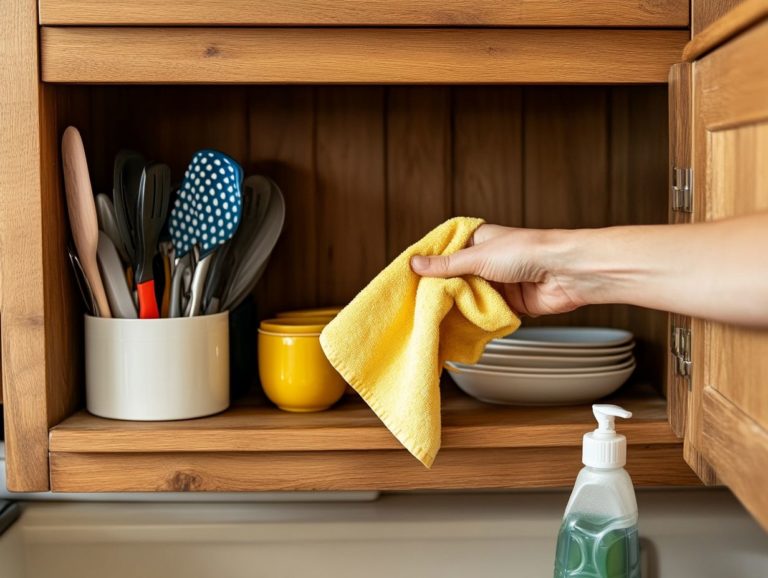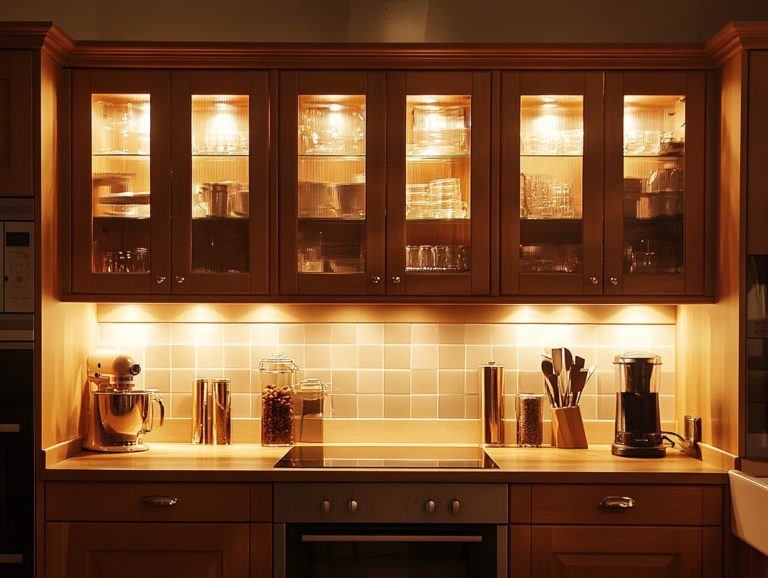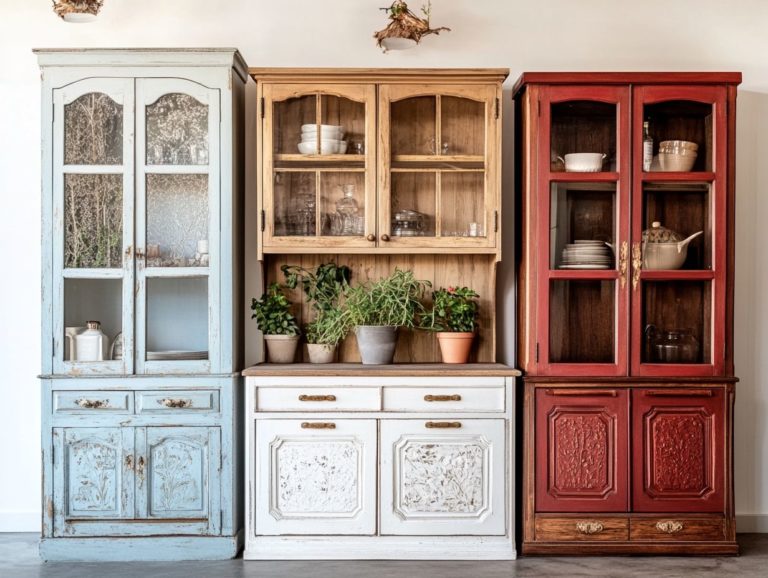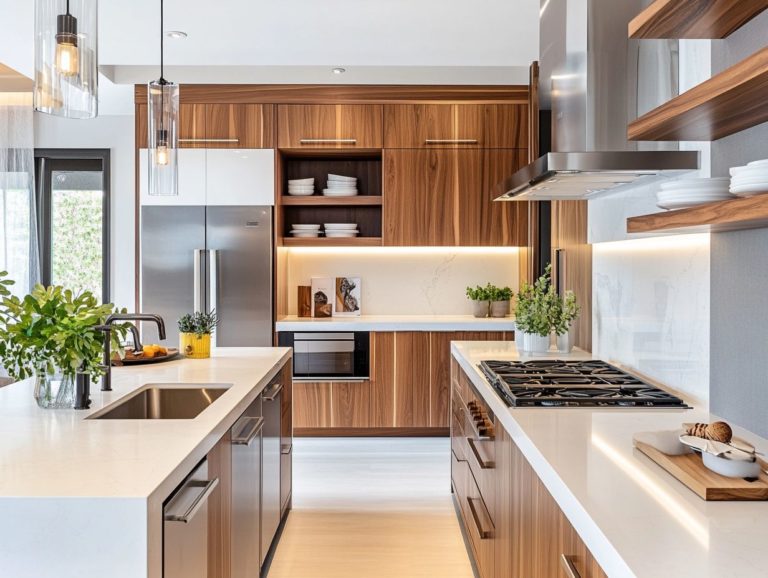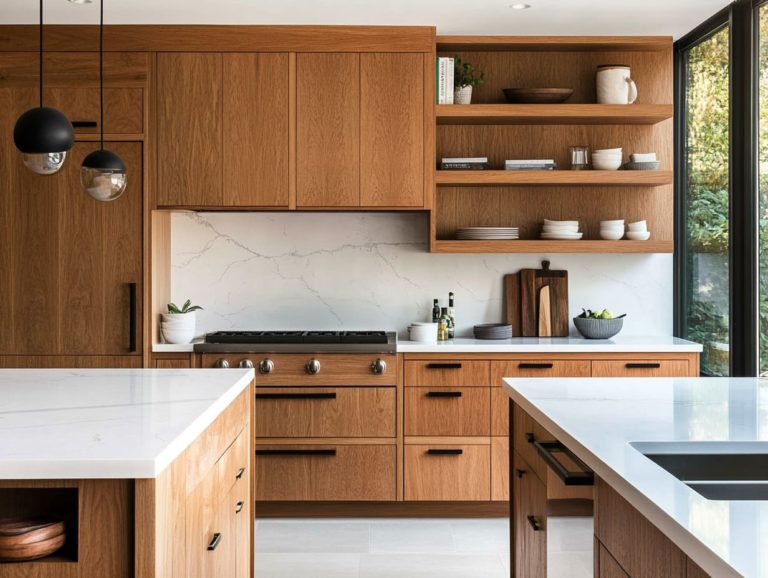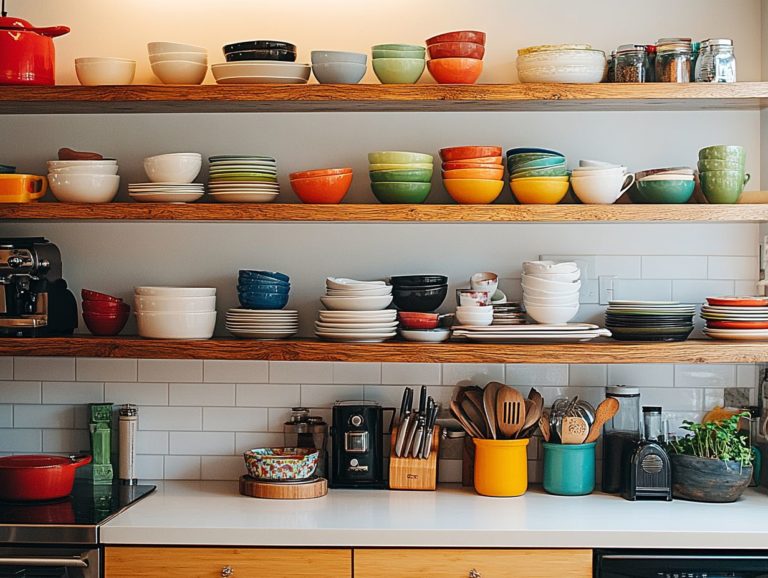The Importance of Cabinet Ventilation in Kitchens
Proper kitchen cabinet ventilation is often overlooked. However, it plays a pivotal role in creating a healthy cooking environment.
By understanding how to effectively ventilate your cabinets, you can enhance air quality, prevent mold growth, and extend the life of your kitchen materials.
This article covers cabinet ventilation essentials. It highlights the benefits and provides practical solutions to improve airflow.
Learn how a few simple steps can transform your kitchen into a safer and more enjoyable space!
Contents
- Key Takeaways:
- Understanding Kitchen Cabinet Ventilation
- Benefits of Proper Cabinet Ventilation
- Signs of Poor Cabinet Ventilation
- Ways to Improve Cabinet Ventilation
- Why Regular Maintenance is a Game-Changer for Your Kitchen!
- Frequently Asked Questions
- 1. What is the importance of cabinet ventilation in kitchens?
- 2. How does cabinet ventilation help with air quality in the kitchen?
- 3. Can inadequate cabinet ventilation lead to kitchen safety issues?
- 4. What are the benefits of installing a range hood as part of cabinet ventilation in kitchens?
- 5. What are the different types of cabinet ventilation systems available for kitchens?
- 6. Can I install cabinet ventilation myself, or do I need a professional?
Key Takeaways:
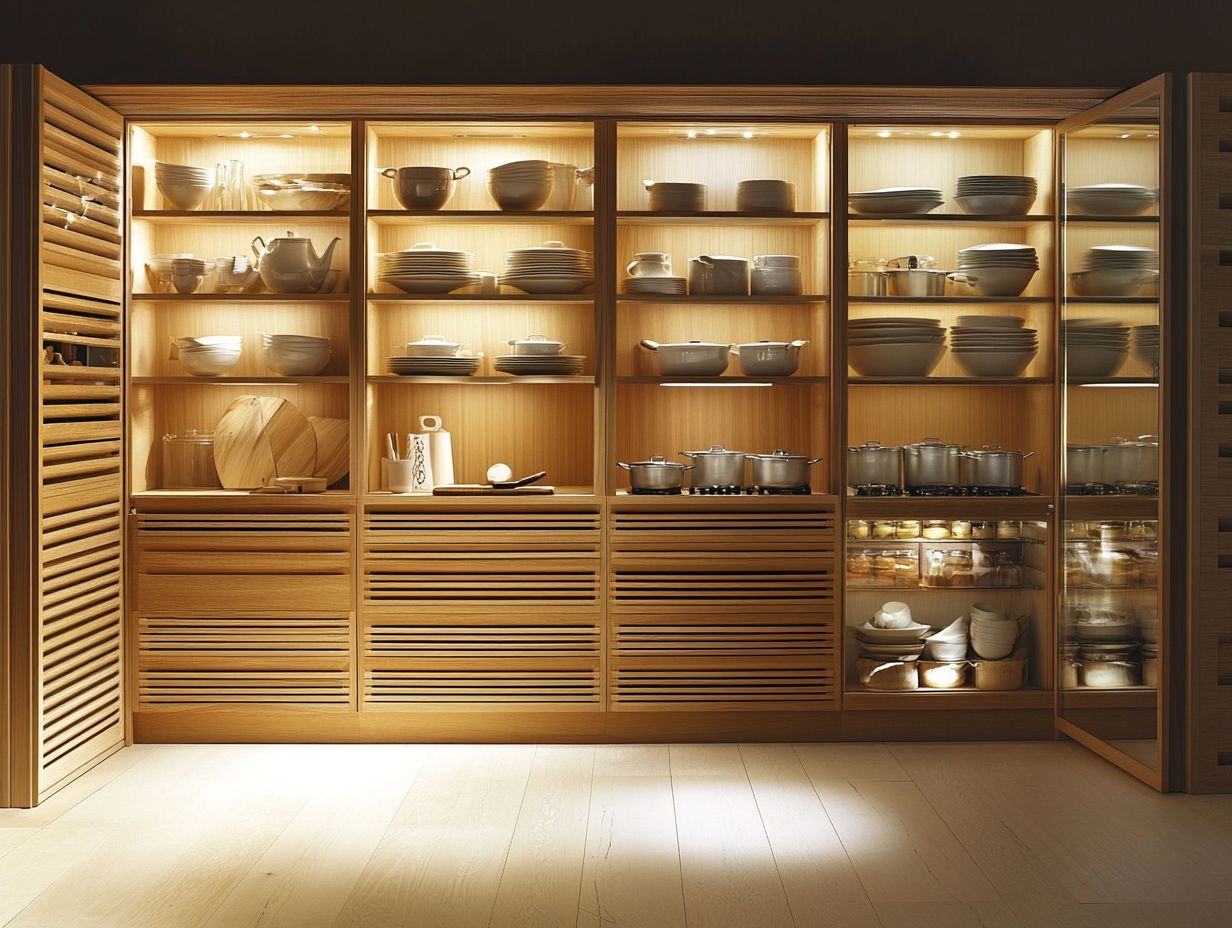
Good news! Proper cabinet ventilation can transform your kitchen by maintaining good air quality and preventing mold and mildew growth.
Regular maintenance and cleaning of cabinet ventilation systems are crucial for ensuring a healthy kitchen environment.
Consider utilizing both artificial and natural ventilation methods to improve airflow and prevent potential issues in your kitchen cabinets.
Understanding Kitchen Cabinet Ventilation
Understanding kitchen cabinet ventilation is vital for cultivating a healthy and efficient kitchen environment, whether in residential spaces or bustling commercial kitchens.
Proper ventilation manages cooking odors, moisture, and harmful gases that can build up during food preparation. Ensuring your kitchen is well-ventilated significantly enhances indoor air quality and promotes overall kitchen hygiene.
Neglecting ventilation can result in persistent odors and heightened humidity. This ultimately compromises the health and comfort of kitchen staff.
This article delves into the importance of effective ventilation systems and their influence on maintaining kitchen cleanliness.
What is Cabinet Ventilation?
Cabinet ventilation is about ensuring proper airflow within your kitchen cabinets. This allows fresh air to circulate while preventing moisture and odors from taking hold.
This process is essential for maintaining the integrity of your cabinetry materials and preserving the quality of the food items you store.
Effective cabinet ventilation reduces humidity levels that can lead to mold and mildew growth, creating a healthier cooking environment. An efficient HVAC system is key to this kitchen ecosystem, promoting optimal airflow beyond mere heating and cooling.
When seamlessly integrated with innovative kitchen cabinet designs, this system enhances the aesthetic appeal of your space while ensuring functional air circulation. The result? A more comfortable and enjoyable cooking experience that you’ll appreciate every time you step into your kitchen!
Benefits of Proper Cabinet Ventilation
Proper cabinet ventilation offers a wealth of benefits that elevate both the health and efficiency of your kitchen environment. You’ll enjoy improved air quality, effective odor elimination, better moisture control, and enhanced hygiene.
Keeping indoor pollutants and harmful gases, like carbon monoxide, at bay is essential for protecting everyone’s health in your space. Proper ventilation is vital for food safety by minimizing the risk of contamination from residual cooking odors and moisture buildup. It also creates a more inviting cooking atmosphere.
Improved Air Quality
Improved air quality is one of the key advantages of effective cabinet ventilation. It significantly reduces the presence of air impurities and allergens in your kitchen.
Kitchens often harbor various pollutants, including harmful chemicals released into the air, smoke, and cooking odors. These can adversely affect your health over time.
Research shows that proper cabinet ventilation can dramatically decrease these contaminants by promoting clean air circulation and expelling stale air. In fact, kitchens with efficient ventilation systems can lower indoor pollutant levels by as much as 50%, creating a healthier environment for you and your loved ones.
By ensuring your cabinets are adequately ventilated, you not only enhance air quality but also tackle issues like mold growth, which thrives in damp conditions. This further underscores the vital role of effective airflow in maintaining a safe and pleasant kitchen space.
Don’t wait! Poor ventilation can lead to serious issues like mold growth. Start improving your cabinet ventilation today for a healthier kitchen!
Preventing Mold and Mildew
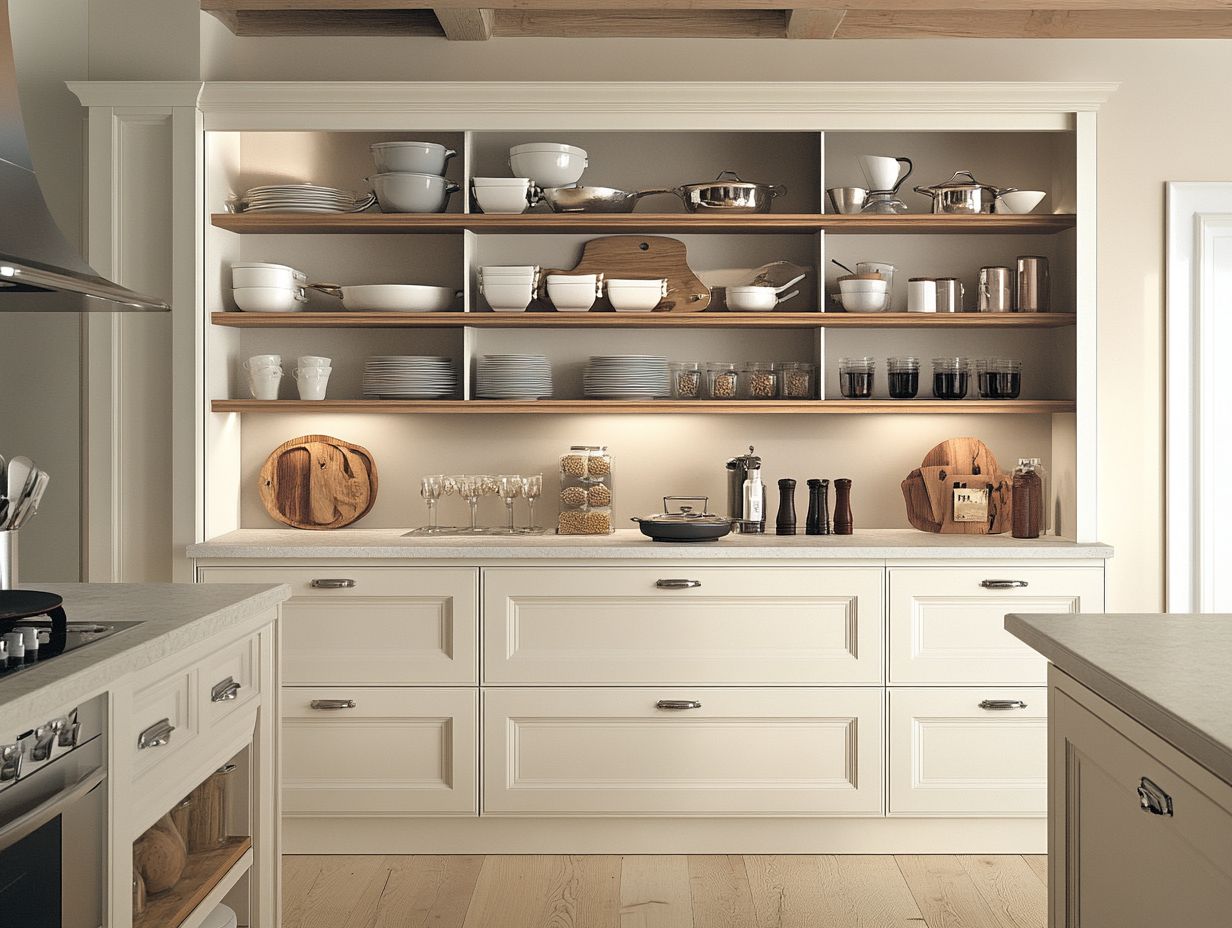
Preventing mold and mildew is a key benefit of proper cabinet ventilation. Excess moisture encourages their growth and can harm your kitchen’s hygiene.
High humidity from cooking and stagnant air creates a perfect breeding ground for fungi. Ensure your kitchen is well-ventilated by opening windows or using exhaust fans.
Regularly wipe down surfaces and fix leaks to reduce moisture. Using dehumidifiers, which are devices that reduce humidity in the air, and choosing moisture-resistant materials helps keep your kitchen healthy.
Signs of Poor Cabinet Ventilation
Recognizing the signs of poor cabinet ventilation is essential for a healthy kitchen. These indicators help you avoid long-term health risks from lack of air circulation.
Watch for warning signs like lingering odors, dampness, or respiratory issues. Unpleasant smells indicate trapped moisture, while mold is a clear sign you need better ventilation.
Identifying these symptoms early lets you take action to improve kitchen hygiene and air quality.
Identifying Warning Signs
It’s crucial to spot warning signs of poor ventilation. Lingering smells or dampness in cabinets are clear indicators of inadequate airflow.
Persistent odors may mean trapped food particles, while moisture can lead to mold. These problems jeopardize your kitchen’s hygiene and can cause health issues.
Good ventilation is necessary for a safe and enjoyable cooking environment.
Ways to Improve Cabinet Ventilation
Improve cabinet ventilation with various methods, like installing specialized systems or utilizing natural ventilation. These steps ensure better air circulation and reduce moisture buildup.
High-efficiency exhaust systems manage odors and pollutants, contributing to a healthier kitchen. Using specialized filters can also improve air quality by trapping harmful particles.
Installation of Ventilation Systems
Installing effective ventilation systems is vital for optimal airflow. Proper ventilation eliminates unwanted odors and moisture, enhancing comfort.
Different systems are available, including exhaust systems that expel stale air and range hoods that capture cooking fumes. Consider professional installation for efficiency and security.
Experts ensure proper mounting and maintenance, extending the lifespan of your systems. A well-ventilated kitchen guarantees a pleasant cooking atmosphere!
Utilizing Natural Ventilation Methods
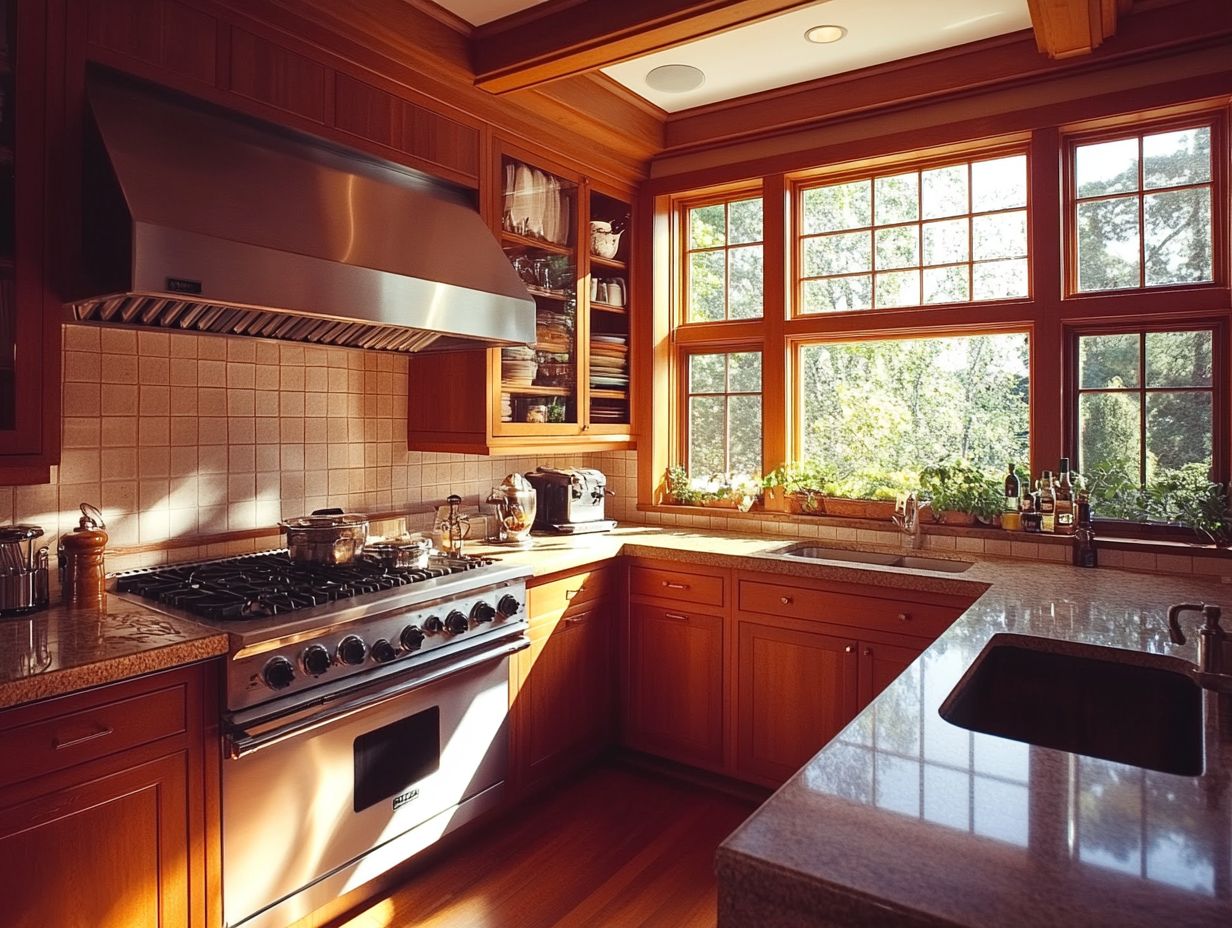
Utilizing natural ventilation methods can significantly enhance airflow in your kitchen, especially in homes with windows and doors. By opening windows and doors during cooler parts of the day, you can invite a refreshing breeze that revitalizes the space and helps expel stale air and excess moisture.
Installing window vents or using ceiling fans alongside open entryways can further optimize this airflow, creating a more comfortable cooking environment. In homes where humidity levels often rise—particularly during cooking or after washing dishes—regular ventilation can reduce the risk of mold growth and improve overall air quality.
Consider adding skylights you can open or louvered windows for better control over airflow. This makes it easier to maintain a fresh and pleasant atmosphere.
Why Regular Maintenance is a Game-Changer for Your Kitchen!
Regular maintenance is crucial for ensuring effective cabinet ventilation and maintaining a hygienic kitchen environment.
Committing to routine cleaning and inspection of ventilation systems helps prevent the accumulation of grease, dust, and moisture. These can undermine air quality and introduce unpleasant odors and health hazards.
Maintaining specialized filters and exhaust systems is essential for optimizing air circulation and removing harmful indoor pollutants. By prioritizing regular maintenance, you enhance your kitchen’s hygiene and create a safer, more inviting cooking space.
Cleaning and Inspecting Cabinet Ventilation
Cleaning and inspecting cabinet ventilation systems is vital for optimal performance and kitchen hygiene. Regular maintenance, every three to six months, preserves air quality and reduces fire hazards.
Employ suitable cleaning techniques, such as using soft brushes to gently remove dust and debris, followed by vacuuming to clear any buildup that might obstruct airflow.
Neglecting these tasks can diminish efficiency and lead to health concerns, as stagnant air may worsen allergens and create unpleasant odors. By prioritizing these responsibilities, you foster a healthier cooking environment and extend the lifespan of your equipment.
Ensuring Proper Cabinet Ventilation for a Healthy Kitchen
Proper cabinet ventilation is essential for a healthy kitchen that enhances cleanliness and supports your well-being. Without adequate airflow, harmful moisture and heat can build up, leading to mold and mildew growth, which jeopardizes health and hygiene.
Insufficient ventilation can make cooking uncomfortable, as excessive humidity creates slippery food preparation surfaces. By improving ventilation, you create a more pleasant working environment and enhance the freshness of ingredients stored in your cabinets.
Proactive measures—like installing vents, using exhaust fans, or opting for open shelving—can significantly boost air circulation, positively impacting your daily cooking endeavors.
Frequently Asked Questions
1. What is the importance of cabinet ventilation in kitchens?
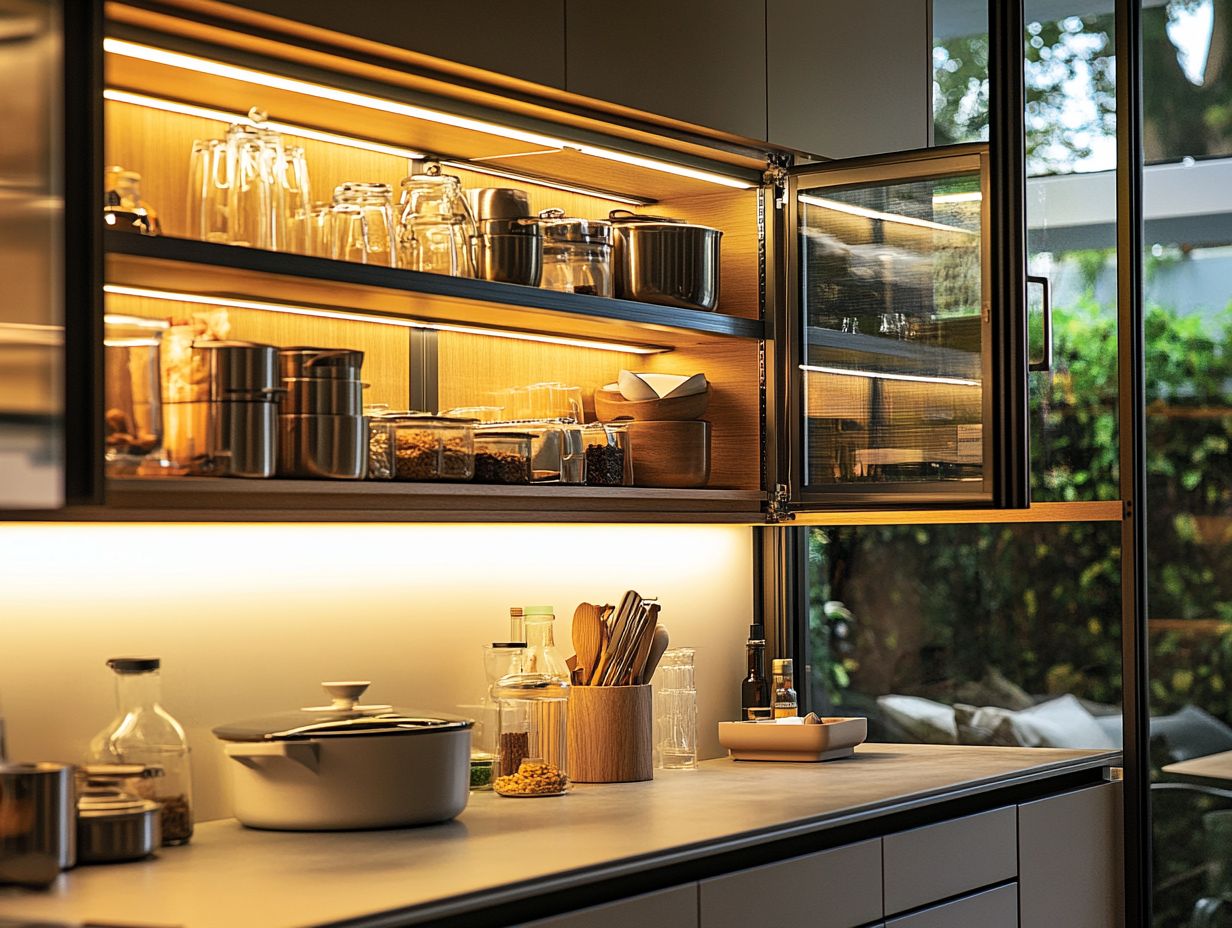
Cabinet ventilation is crucial in kitchens because it helps remove excess moisture and heat from the cooking area. This prevents the growth of mold and bacteria while maintaining a comfortable cooking environment.
2. How does cabinet ventilation help with air quality in the kitchen?
Cabinet ventilation removes contaminants and pollutants such as smoke, grease, and cooking odors from the air. This improves indoor air quality and creates a healthier environment for cooking and dining.
Start enhancing your kitchen’s air quality today!
3. Can inadequate cabinet ventilation lead to kitchen safety issues?
Yes, poor cabinet ventilation can create safety risks in your kitchen.
Without proper ventilation, heat and steam can build up, potentially causing burns or damaging cabinets and appliances. It can also increase the risk of fire hazards.
4. What are the benefits of installing a range hood as part of cabinet ventilation in kitchens?
A range hood improves your kitchen by removing heat and moisture.
It also cuts down on cooking smells and enhances air quality. Additionally, it helps prevent the accumulation of grease and grime on kitchen surfaces and cabinets.
5. What are the different types of cabinet ventilation systems available for kitchens?
Several cabinet ventilation options are available.
These include range hoods, vented cabinets, and ventless cabinets. Range hoods are the most common and come in various sizes and styles, while vented and ventless cabinets offer a more discreet option for ventilation.
6. Can I install cabinet ventilation myself, or do I need a professional?
It’s best to hire a professional for cabinet ventilation installation.
They can ensure it’s done safely and efficiently, as it involves working with electrical and ventilation systems.
